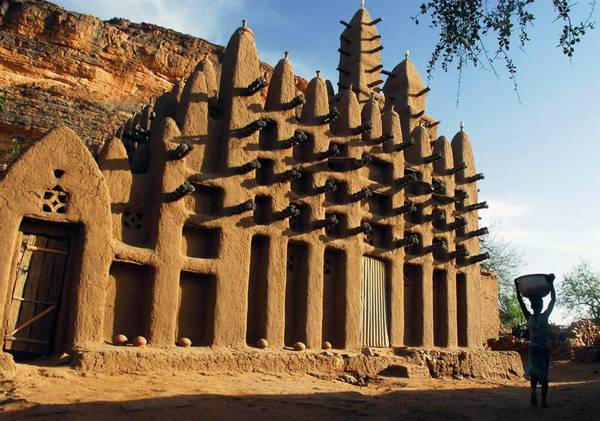The Songhai Empire is one piece of evidence that proves that colonialism did not introduce civilization to Africa. As far back as the 15th century, the Songhai Empire was known for its wealth, mercantile success, political expansion, and scholarly advances.
To date, the empire remains one of the most successful African kingdoms in history and its region spans modern-day Mali, Niger, and Nigeria. On record to be discovered in 1591, the empire was at the peak of civilization and dominated the western Sahel/Sudan.
Its commercial capital, Gao, a small Niger River trading center to this day, was home to many African cultural heritage sites. Notable among the heritage sites in Goa, is the famous Goa Mosque, and the Tomb of Askia – the sacred resting place of Songhai emperors. Other major commercial and cultural cities in the Songhai Empire include Timbuktu and Djenne.
The Songhai Empire is considered one of the greatest empires in African history for many significant reasons. At its peak, it boasted of several thousand cultures under its direct control, making it by far the largest empire in African history.
Until the colonial ambition by the Europeans, which led to the violent invasion of independent kingdoms, the Songhai Empire carried out the largest and most successful conquests across the African region. Its centralized ambition was the most dominant across the entire sub-Saharan region.
The Songhai people founded the city of Gao around 800 A.D. They established it as their capital in the 11th century during the reign of King Dia Kossoi – a period when the empire experienced unprecedented wealth, peace, and advancement.
However, the period of economic stability and peace ended when a civil war broke within the empire in 1591 – this was the beginning of the fall of the empire. The civil war gave the then Sultan of Morocco, Ahmad I al-Mansur Saadi, an opportunity to invade the Songhai Empire.
Fuelled by his ambition to control the vast gold fields in Western Africa and establish himself as the undisputed Caliph of Sudan, Sultan Saadi sent an army to conquer Songhai.
In what has gone down in history as the Battle of Tondibi, Sultan Ahmad I al-Mansur Saadi battled against Askia Ishaq II, who is on record to be the last Emperor of Songhai. The Sultan was determined to do everything within his power to seize control of the trans-Saharan trade in gold and salt.
Although the Songhai military did not lack manpower, King Askia Ishaq II did not invest in the army. Despite their numerical advantage, they fell to a more equipped Moroccan army with canons and other firearms in 1591.
Morocco, however, soon discovered that despite conquering the Songhai Empire, governing it was not an easy task. There were numerous rebellions and resistances which disrupted mining and trade, leading to the withdrawal of the Moroccan army from the region in 1661.
But the Songhai Empire was never the same again. The death of the monarch and exile of surviving elites – many of whom left Gao to set up a new capital city at Lulami, affected the empire in no small way.
Between 1591 and 1901, various Emperors, known in Songhai as Askias, tried to continue with the traditions of the old empire, but achieved little success.
Finally, all that was left of the empire came to an end in 1901, when French colonial forces conquered the state; the French colonialists extinguished the glory days that the Songhai Empire enjoyed. Today, all that is left of the great empire is its rich history.


Related News
The Rise and Fall of the Ancient Oyo Empire
Nov 26, 2023
How Ancient Egyptian Knowledge Influenced the Invention of Electricity
Aug 29, 2022
The Inhumane Treatment of African Slaves Before Departure to the Land of No Return
Apr 30, 2022